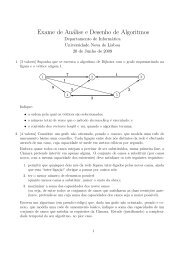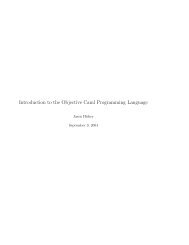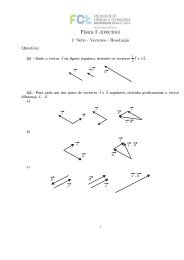Security Articles from Wikipedia
Security Articles from Wikipedia
Security Articles from Wikipedia
Create successful ePaper yourself
Turn your PDF publications into a flip-book with our unique Google optimized e-Paper software.
IPsec 62<br />
IPsec<br />
Internet Protocol <strong>Security</strong> (IPsec) is a protocol suite for securing Internet Protocol (IP) communications by<br />
authenticating and encrypting each IP packet of a communication session. IPsec also includes protocols for<br />
establishing mutual authentication between agents at the beginning of the session and negotiation of cryptographic<br />
keys to be used during the session.<br />
IPsec is an end-to-end security scheme operating in the Internet Layer of the Internet Protocol Suite. It can be used in<br />
protecting data flows between a pair of hosts (host-to-host), between a pair of security gateways<br />
(network-to-network), or between a security gateway and a host (network-to-host). [1]<br />
Some other Internet security systems in widespread use, such as Secure Sockets Layer (SSL), Transport Layer<br />
<strong>Security</strong> (TLS) and Secure Shell (SSH), operate in the upper layers of the TCP/IP model. The use of TLS/SSL must<br />
be designed into an application to protect the application protocols. In contrast, applications do not need to be<br />
specifically designed to use IPsec. Hence, IPsec protects any application traffic across an IP network.<br />
IPsec originally was developed at the Naval Research Laboratory as part of a DARPA-sponsored research project.<br />
ESP was derived directly <strong>from</strong> the SP3D protocol, rather than being derived <strong>from</strong> the ISO Network-Layer <strong>Security</strong><br />
Protocol (NLSP). The SP3D protocol specification was published by NIST, but designed by the Secure Data<br />
Network System project of the National <strong>Security</strong> Agency (NSA), IPsec AH is derived in part <strong>from</strong> previous IETF<br />
standards work for authentication of the Simple Network Management Protocol (SNMP).<br />
IPsec is officially specified by the Internet Engineering Task Force (IETF) in a series of Request for Comments<br />
documents addressing various components and extensions. It specifies the spelling of the protocol name to be<br />
IPsec. [2]<br />
<strong>Security</strong> architecture<br />
The IPsec suite is an open standard. IPsec uses the following protocols to perform various functions: [3][4]<br />
• Authentication Headers (AH) provide connectionless integrity and data origin authentication for IP datagrams and<br />
provides protection against replay attacks. [5][6]<br />
• Encapsulating <strong>Security</strong> Payloads (ESP) provide confidentiality, data origin authentication, connectionless<br />
integrity, an anti-replay service (a form of partial sequence integrity), and limited traffic flow confidentiality. [1]<br />
• <strong>Security</strong> Associations (SA) provide the bundle of algorithms and data that provide the parameters necessary to<br />
operate the AH and/or ESP operations. The Internet <strong>Security</strong> Association and Key Management Protocol<br />
(ISAKMP) provides a framework for authentication and key exchange, [7] with actual authenticated keying<br />
material provided either by manual configuration with pre-shared keys, Internet Key Exchange (IKE and IKEv2),<br />
Kerberized Internet Negotiation of Keys (KINK), or IPSECKEY DNS records. [8][9][10][11]<br />
Authentication Header<br />
Authentication Header (AH) is a member of the IPsec protocol suite. AH guarantees connectionless integrity and<br />
data origin authentication of IP packets. Further, it can optionally protect against replay attacks by using the sliding<br />
window technique and discarding old packets (see below).<br />
• In IPv4, the AH protects the IP payload and all header fields of an IP datagram except for mutable fields (i.e.<br />
those that might be altered in transit), and also IP options such as the IP <strong>Security</strong> Option (RFC-1108). Mutable<br />
(and therefore unauthenticated) IPv4 header fields are DSCP/TOS, ECN, Flags, Fragment Offset, TTL and<br />
Header Checksum. [6]<br />
• In IPv6, the AH protects the most of the IPv6 base header, AH itself, non-mutable extension headers after the AH,<br />
and the IP payload. Protection for the IPv6 header excludes the mutable fields: DSCP, ECN, Flow Label, and Hop









